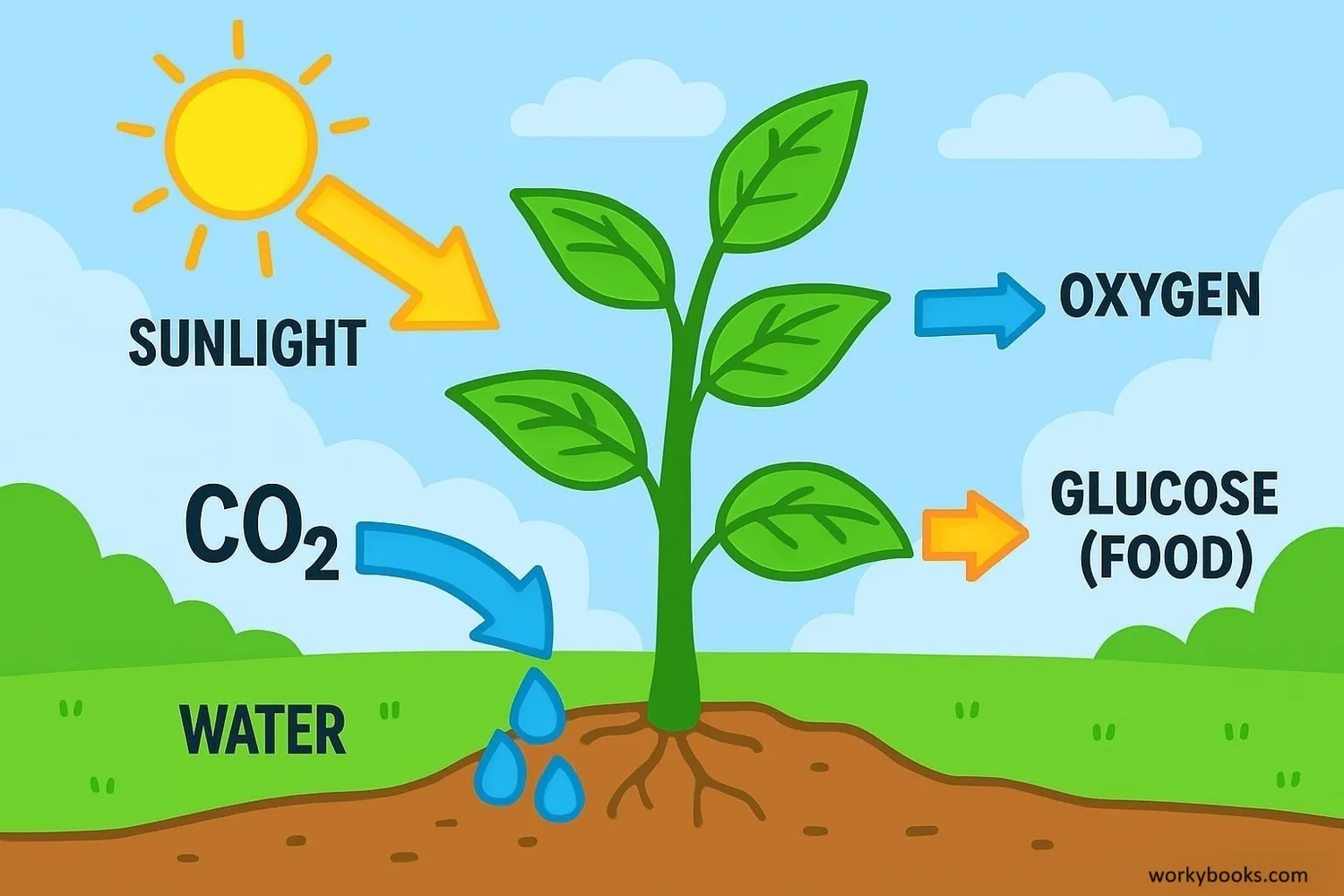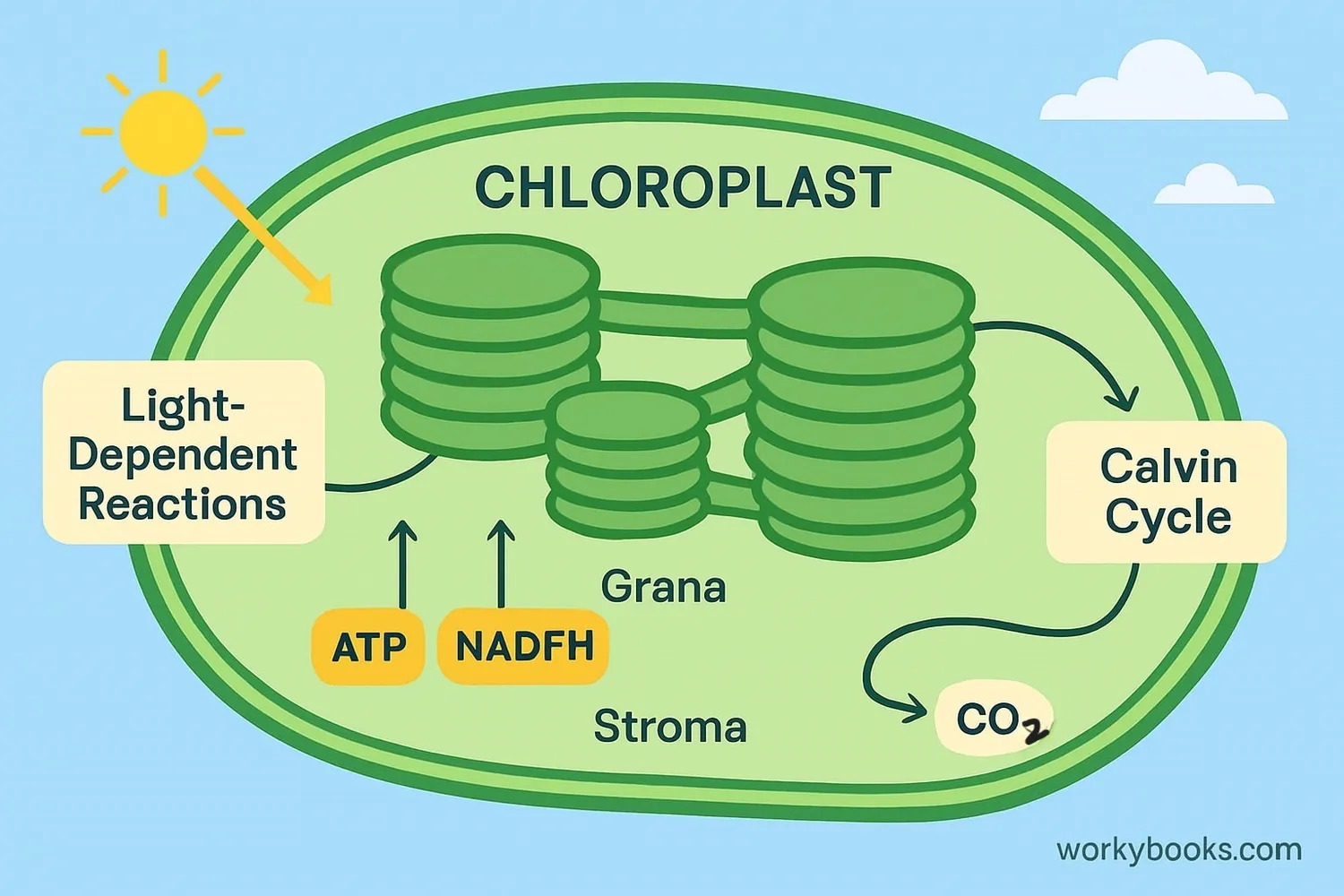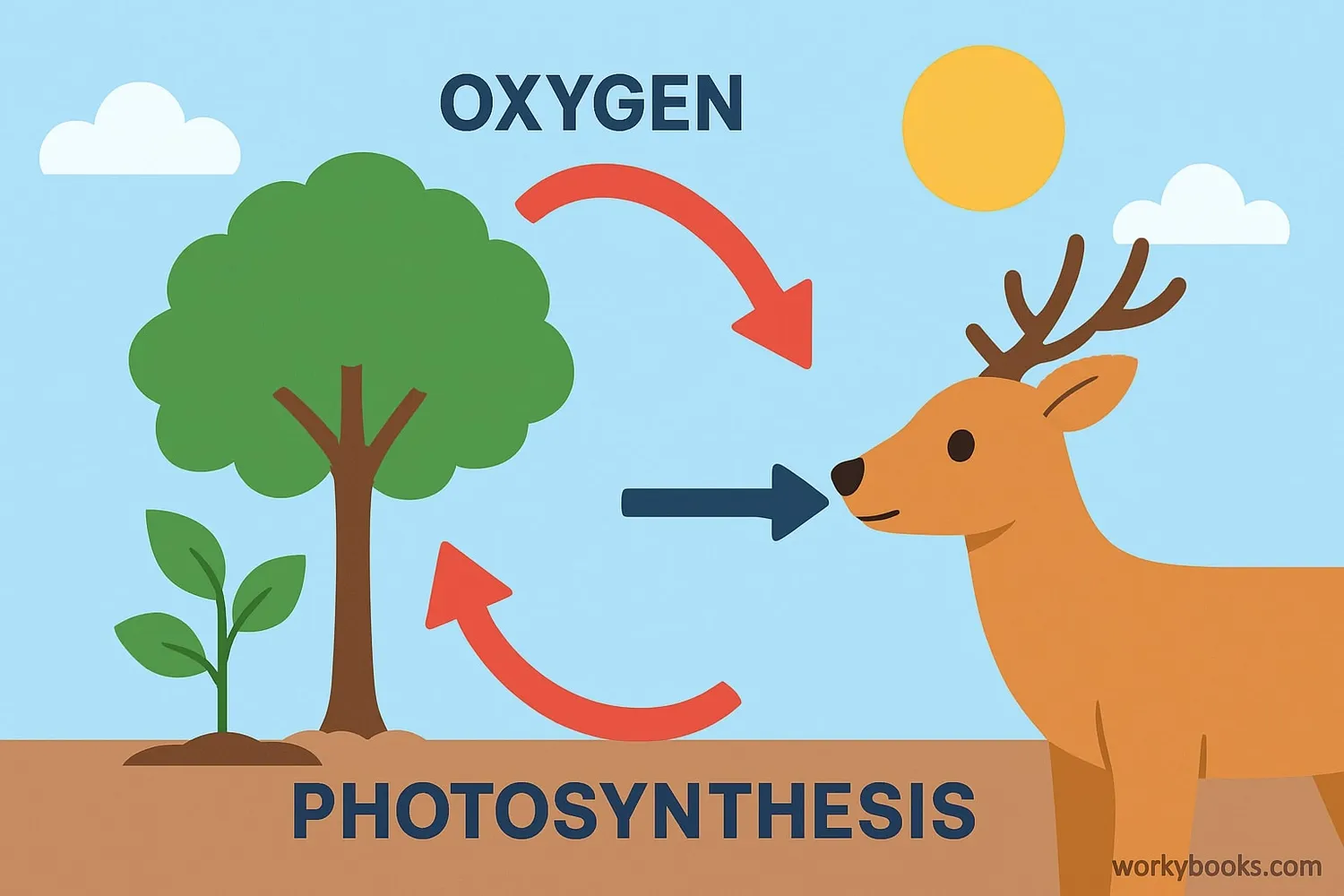Photosynthesis - Definition, Examples, Quiz, FAQ, Trivia
Discover how plants turn sunlight into food and oxygen!
What is Photosynthesis?

Photosynthesis is the amazing process that plants use to make their own food! It's how they convert sunlight into chemical energy that they can use to grow and survive.
During photosynthesis, plants take in carbon dioxide from the air and water from the soil. Using the energy from sunlight, they transform these ingredients into glucose (a type of sugar that serves as food) and release oxygen as a byproduct. This process happens inside special structures in plant cells called chloroplasts.
The special formula for photosynthesis is:
6CO₂ + 6H₂O + Light Energy → C₆H₁₂O₆ + 6O₂
Which means: Carbon Dioxide + Water + Sunlight → Glucose + Oxygen
Did You Know?
Plants are called autotrophs because they can make their own food. This makes them the foundation of almost all food chains on Earth!
How Photosynthesis Works

Photosynthesis happens in two main stages inside the chloroplasts of plant cells:
Light Reactions
Sunlight is captured by chlorophyll and converted into chemical energy (ATP and NADPH)
Calvin Cycle
Carbon dioxide is fixed into sugar using ATP and NADPH from the light reactions
Light Reactions: In this first stage, sunlight energy is captured by the green pigment called chlorophyll in the chloroplasts. This energy splits water molecules into oxygen, hydrogen ions, and electrons. The energy from this process creates two energy-carrying molecules: ATP and NADPH.
Calvin Cycle: In this second stage (which doesn't require light), the ATP and NADPH produced earlier are used to convert carbon dioxide into glucose. An enzyme called Rubisco helps capture carbon dioxide molecules and starts the process of building sugar molecules.
Chlorophyll Fact!
Chlorophyll absorbs red and blue light but reflects green light, which is why plants appear green to our eyes!
Why Photosynthesis is Important

Photosynthesis is one of the most important processes on Earth. Here's why:
Oxygen Production
Provides the oxygen we breathe - the basis of Earth's atmosphere
Food Source
Creates food for plants, which becomes food for animals
Carbon Cycle
Removes carbon dioxide from the atmosphere
Without photosynthesis, life as we know it wouldn't exist! Here's what we wouldn't have:
• Oxygen to breathe
• Food sources for animals and humans
• The basis of most ecosystems
• Natural regulation of carbon dioxide levels
Photosynthesis and cellular respiration work together to create the amazing circle of life that keeps our planet alive!
Photosynthesis Quiz
Test your photosynthesis knowledge with this quiz! Answer all 5 questions to see how much you've learned.
Frequently Asked Questions
Here are answers to some common questions about photosynthesis:
Fun Photosynthesis Trivia
Discover some amazing facts about photosynthesis!
Sun Power
Photosynthesis captures about 1% of the solar energy that reaches Earth's surface. This tiny percentage powers almost all life on our planet!
Fast Process
Photosynthesis happens incredibly fast! It takes only about 100 trillionths of a second for a plant to capture a photon of light and begin the energy conversion process.
Ocean Producers
Most of Earth's photosynthesis happens in the ocean! Tiny phytoplankton are responsible for about half of the world's oxygen production.
Space Farming
Scientists are developing ways to use photosynthesis to grow food in space! Special LED lights provide the exact wavelengths plants need for optimal growth in spacecraft.


